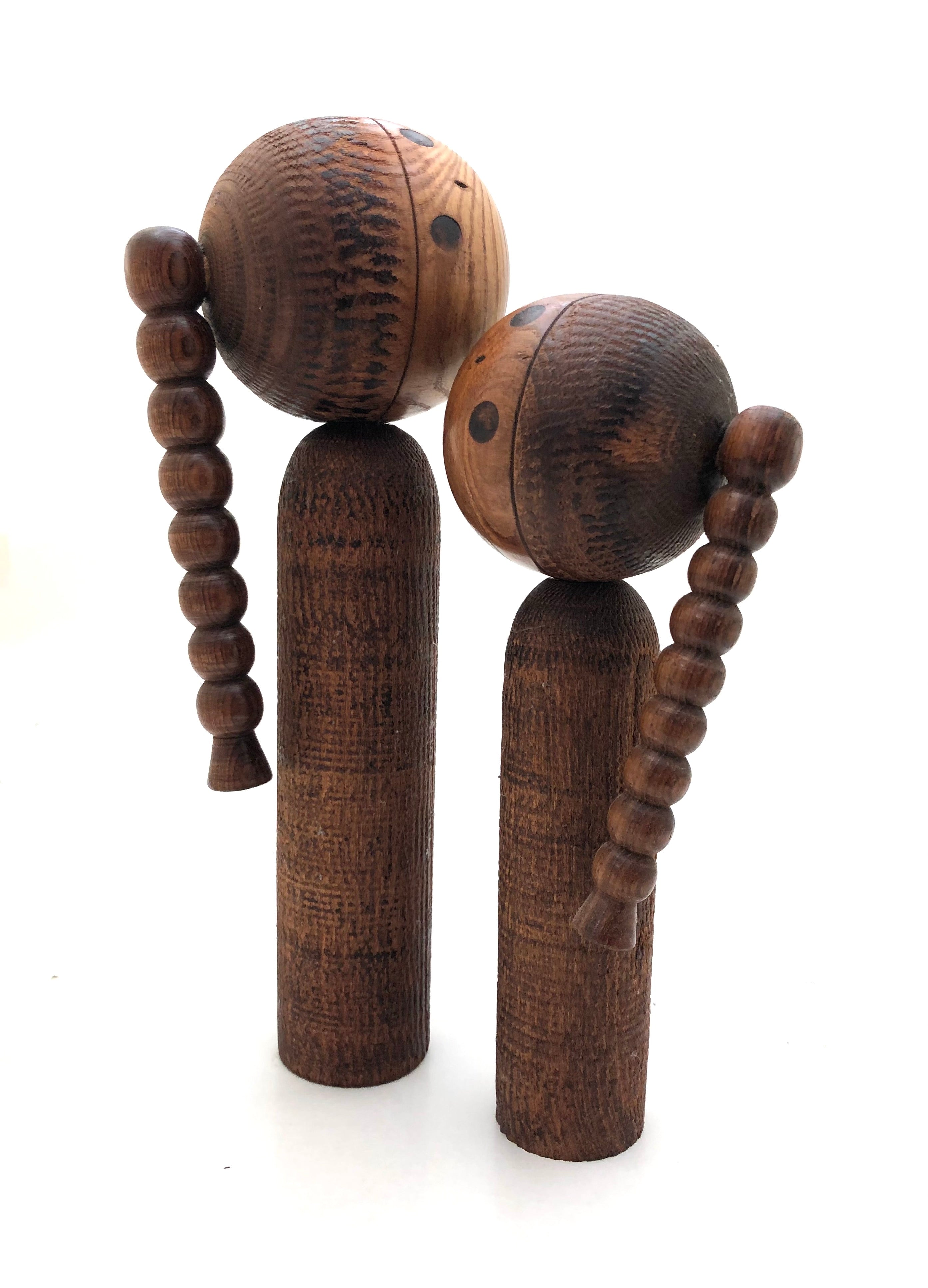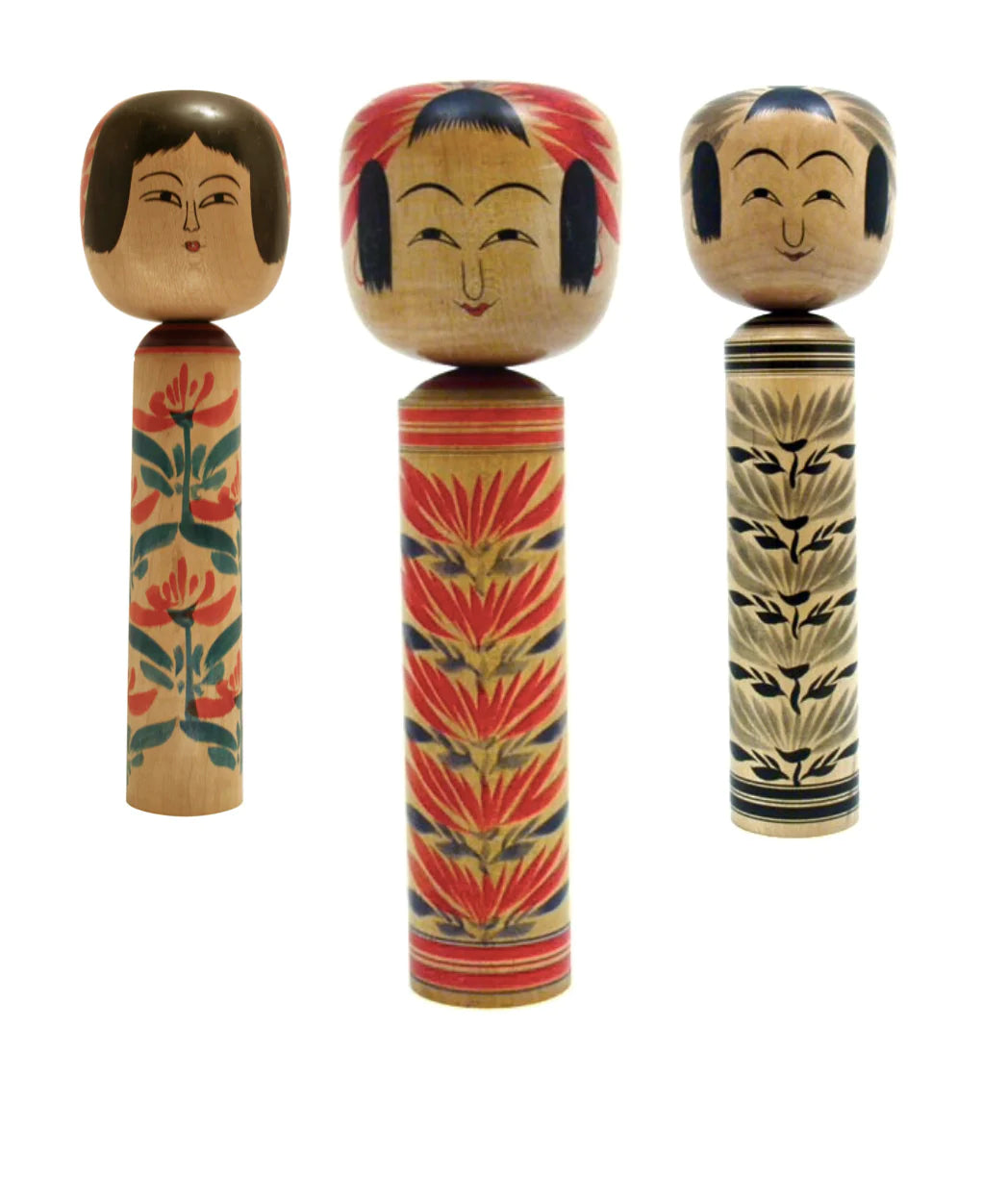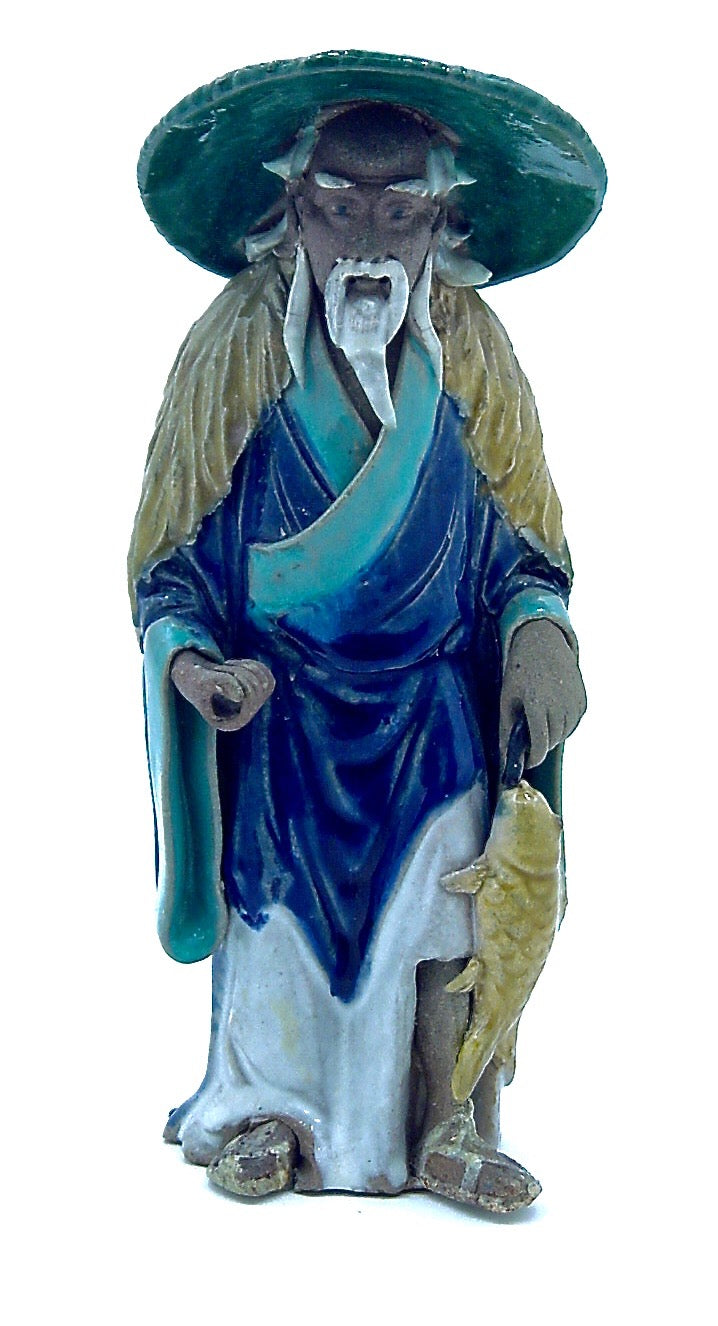
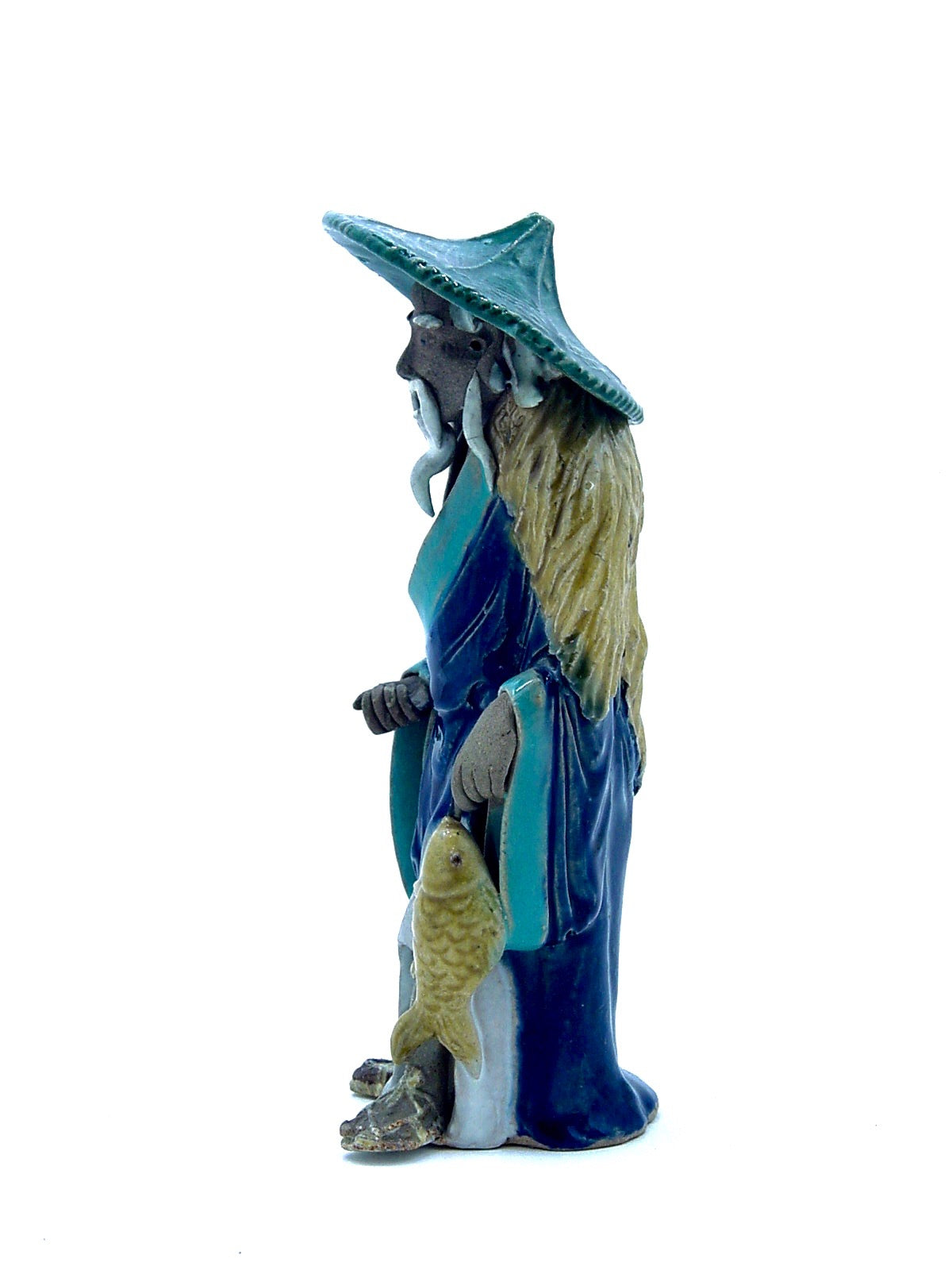
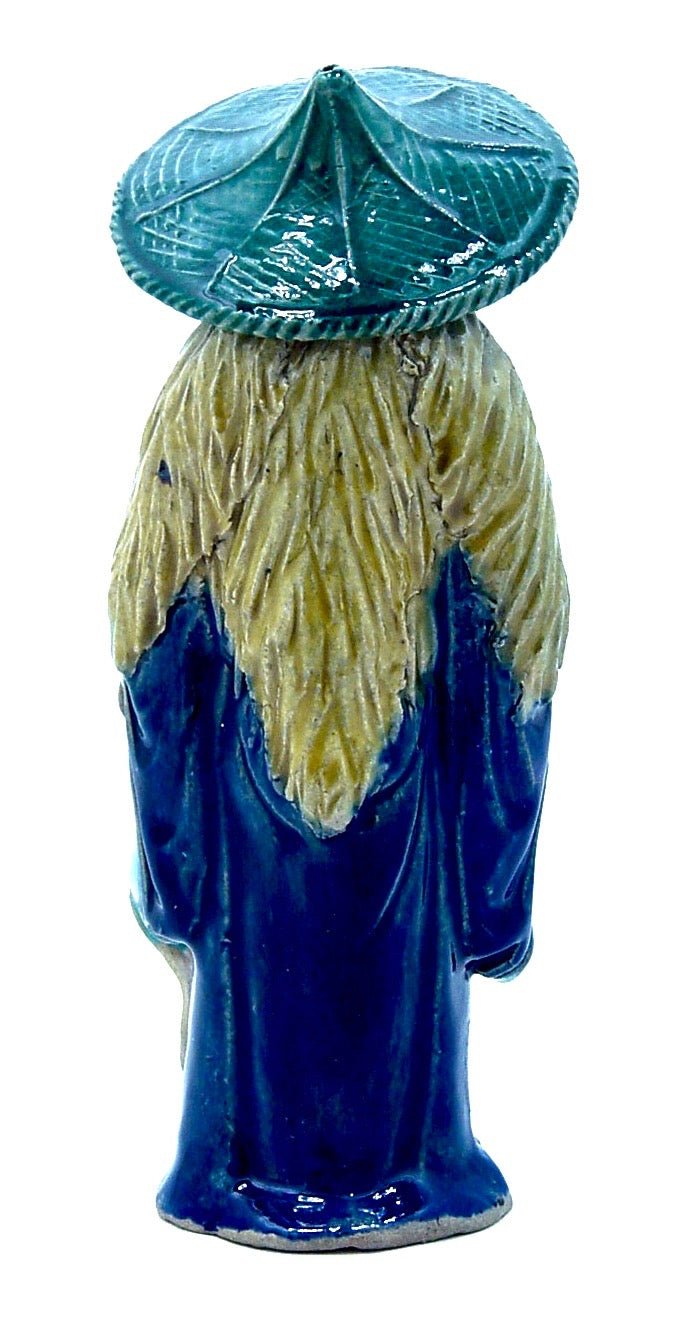
Antique Chinese Republic Shiwan (Shekwan) Pottery | Standing Fisherman with Pipal (Raincoat)
Dimensions: 3-0”w x 8-0”h
Shown is a Chinese fisherman standing with fish in hand. Known also as Shiwan Gongzai, (this piece was purchased in a small town located in Guangdong province, China in 1985 from a scholar who specialized in the history of Shiwan ware). Pottery making in Shiwan goes back thousands of years, (Ming/Qing dynasties), representing the daily customs of everyday people: a very popular, collectible folk art.
The most notable feature of this large Shiwan figure is his raincoat. The figure is beautifully and deeply glazed, with a robe in blue/turquoise; his trousers in white; his raincoat in an unusual yellow glaze; and his straw hat, nicely detailed in green, both highly textured. The fish he is carrying is in yellow okra and his hands, feet, and face are unglazed. Notice the wonderful strapping detailing representing his sandals.
It was the kind of raincoat also worn by the Qing Dynasty emperors and officials, where in stringent rules on the use and color of the raincoat were enforced. Chinese raincoats have gone through several changes over the centuries. The earliest forms of Chinese raincoats were made of straw with the name ‘straw rain capes’ or ‘coir rain capes’. Originally, capes were made of Chinese silver grass. These rain capes are still used, especially among farmers and fishermen, as documented in this figure. However, during the period in which this Shiwan figure was made, (Qing Dynasty), another type of raincoat was developed in the Qing Dynasty. It was named pipal raincoat because it was woven with pipal tree leaves, which research shows represents the one shown in this figure. The piece has the impressed CHINA mark on the bottom, indicating it was made between 1890-1919. This piece was purchased in a small town located in Guangdong province, China in 1985 from a scholar who specialized in the history and folklore embodied in Shiwan ware. Because of its age and the historic detailing, it is very rare and few are found in museums and mostly in private collections. Because of its age and rarity, few are found in museums outside of China, and most are held in private collections in both that country and abroad.
Antique Condition: This is a handsome and beautifully glazed figure in excellent condition: no chips or missing elements or repairs. “As is” and retains the original craft/workmanship. No discoloration, chipping/cracking, surface wear, or structural damage are noted.
NOTE: Overview and Characteristics of Shiwan Art Pottery
As an important part of Chinese traditional culture, ceramic wares have a long history reflecting the customs of this ancient culture. One of the most famous types of ceramic works is called Shiwan (Shekwan) ware, which has been the shining star in Chinese folk ceramic art as early as the Tang and Song Dynasties (618-906AD), and which flourished in the Ming and Qing dynasties.
Chinese classical Shiwan ware is a type of traditional pottery that comes from the talented artists of a small town located in the south of China called Shiwan, in Foshan City, famous for its culture and pottery. Here craftsmen are well-known for their glazing techniques and unique forms. All the sculptural work is hand-formed, and sometimes involves numerous family members within a village, while directed by a master craftsman, every object is unique, and therefore, a limited edition, which attracts art collectors the world over. The three largest collections of Shiwan Art Pottery are housed in the Hong Kong Fung Ping Shan Museum, and the Chinese Cultural Centre in San Francisco.
Original Shiwan figurines, (1880-1940), are extremely rare because of their art/craftsmanship and their delicate, fragile nature. The greater the detailing, the more likely the figure has been made by a master artist, hence the higher value. Also the larger the piece the more valuable, (8-0” or pieces over 20.0” tall) are extremely rare. The age of Shiwan ware can be verified by the markings, or lack of markings, the fact that they are hand-formed, depicting highly expressive figural forms and vivid imagery; primitive in sculpting techniques; the decorative elements associated with the figure; the deep rich glazes infused with the piece; the type of regional clay (sandy, course clay is the oldest), and the stylistic differences. Finally, pieces signed or stamped by the artist/craftsman are rare. The oldest Shiwan pieces, prior to 1890, will not have a signature or stamp.
DO NOT CONFUSE MUDMEN / MUD FIGURES WITH SHIWAN WARE! This unique artistic style made Shiwan ceramics extraordinarily splendid, (not to be confused with the export mud men, which were smaller figures made of mud-like clay forced into a mold and/or finger-formed, and used as decorative additions to bonsai, planters, and aquariums). These lack the expression, detail, and individuality of their glazed handmade counterparts). © 2019 — Vermillion Publishing
Return Policy
Our antique/vintage pieces are identified/described and professionally photographed, and considered, “as is”, therefore all sales are final. Read our full refund and return policy.


